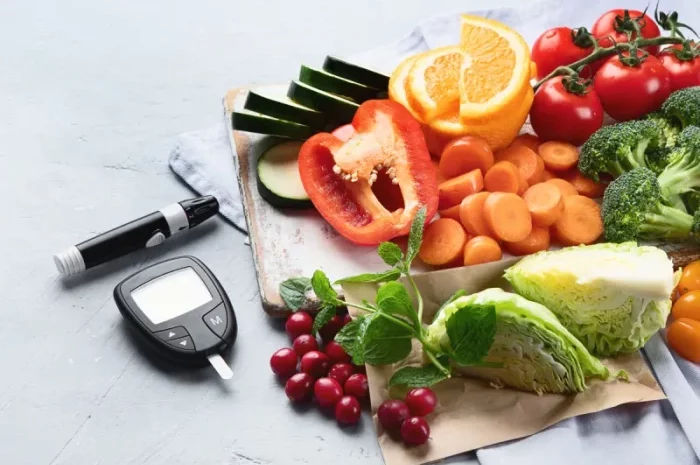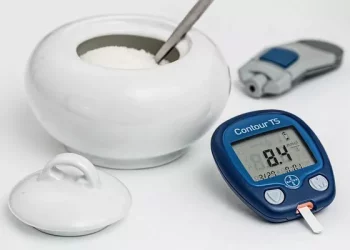Managing diabetes requires a comprehensive approach, with one of the most important elements being dietary control. Food plays a significant role in how your body handles blood glucose, and how often you eat is just as important as what you eat. While many people are familiar with the concept of choosing healthy foods to manage diabetes, there’s less emphasis on how often those foods should be consumed to maintain optimal blood sugar levels.
This article will explore how the timing and frequency of meals affect diabetes management. It will discuss the benefits of eating frequently versus infrequently, delve into the relationship between meal timing and insulin sensitivity, and provide practical guidelines for how often individuals with diabetes should eat throughout the day. By the end, you’ll have a deeper understanding of how meal frequency can influence blood sugar control and overall health.
The Connection Between Food and Blood Sugar
Before we dive into meal timing, it’s crucial to understand how food affects blood sugar. When you consume carbohydrates, they are broken down into glucose (sugar), which enters your bloodstream. Your pancreas releases insulin, a hormone that helps your cells absorb this glucose for energy or storage. In individuals with diabetes, this system does not function as efficiently as it should. Either the body cannot produce enough insulin (type 1 diabetes) or the body becomes resistant to insulin (type 2 diabetes), which results in elevated blood sugar levels.
For those managing diabetes, the goal is to keep blood glucose levels within a target range. Consistently high or low blood sugar can lead to serious health complications, including heart disease, kidney problems, nerve damage, and vision issues. By understanding how the body responds to food intake at various times of the day, it’s possible to make more informed choices that support blood sugar stability.
Why Meal Timing Matters for Diabetes
Meal timing is important for people with diabetes because it influences blood sugar patterns throughout the day. When you eat too much at once or have irregular meal times, your blood sugar levels may spike or dip unpredictably. On the other hand, eating more regularly and in smaller portions can help manage blood sugar levels more effectively.
Several key factors contribute to why meal timing is important for diabetes management:
Insulin Sensitivity: The body’s response to insulin, or insulin sensitivity, can vary throughout the day. After eating, insulin sensitivity is typically higher, meaning your body may more effectively use the insulin you have. This is why smaller, more frequent meals are often recommended—because they help prevent large blood sugar fluctuations.
Preventing Large Blood Sugar Spikes: Consuming large meals can cause blood sugar to spike, especially if they contain high amounts of carbohydrates. Frequent, smaller meals help to distribute carbohydrate intake more evenly, reducing the risk of large spikes.
Energy Stability: Regular meals help provide consistent energy throughout the day, avoiding the fatigue or irritability that can result from low blood sugar. In particular, individuals with diabetes should avoid long periods of fasting, as this can cause blood sugar to dip too low (hypoglycemia).
How Often Should You Eat When You Have Diabetes?
There is no one-size-fits-all answer to the question of how often someone with diabetes should eat, as it depends on various factors, including the type of diabetes, the individual’s medication regimen, activity level, and personal preferences. However, there are general guidelines and strategies that can help you determine a meal schedule that works best for you.
1. Three Meals Per Day
Traditionally, most people follow the three-meals-a-day routine, often with breakfast, lunch, and dinner. For individuals with diabetes, this pattern can work well, provided that the meals are balanced and include adequate amounts of protein, healthy fats, and fiber, in addition to carbohydrates.
Why three meals may work:
It provides structure to the day, ensuring regular food intake.
Each meal should be spaced out by about 4–6 hours, helping to prevent large fluctuations in blood sugar levels.
When meals are well-balanced, the body can process carbohydrates slowly, which may prevent blood sugar spikes after eating.
However, it’s important to note that some people with diabetes may still experience significant post-meal blood sugar increases, even with well-balanced meals. This is especially true for individuals with insulin resistance, where the body’s cells are less responsive to insulin.
2. Incorporating Snacks Between Meals
For many people with diabetes, eating three meals a day may not be enough to keep blood sugar levels stable. Adding small, healthy snacks between meals can help prevent low blood sugar (hypoglycemia) and keep energy levels steady throughout the day. Typically, a snack is consumed about 2–4 hours after a meal.
Benefits of snacks:
Helps maintain blood sugar levels by preventing dips between meals.
Provides an opportunity to introduce additional healthy foods, like nuts, seeds, or vegetables, that support stable blood sugar control.
Helps prevent overeating at meal times by curbing excessive hunger.
For people with type 1 or type 2 diabetes who are on insulin or other medications that lower blood sugar, snacks are particularly important. A small snack with a carbohydrate component can help avoid dangerous drops in blood sugar levels.
3. Smaller, More Frequent Meals
For individuals with diabetes who experience significant blood sugar fluctuations, smaller, more frequent meals may be beneficial. In this model, eating 5–6 smaller meals throughout the day, spaced 2–3 hours apart, can help to better manage blood sugar.
Why smaller, more frequent meals work:
It prevents large spikes in blood sugar by breaking down the carbohydrates into smaller amounts that the body can process more effectively.
It reduces the risk of hyperglycemia (high blood sugar), which can occur if large meals are consumed infrequently.
Smaller meals help maintain consistent energy levels throughout the day.
This approach may also help people who experience extreme hunger between meals or those who find that large meals leave them feeling sluggish or tired. However, it’s important to note that this method may not work for everyone, and people with diabetes should monitor their blood sugar carefully to see how their body responds to this pattern.
4. Meal Timing Around Physical Activity
When you exercise, your body’s sensitivity to insulin increases, and the muscles use glucose for energy. This means that meal timing and content should take into account your activity levels, particularly for individuals who engage in regular physical activity.
Best practices for meal timing around exercise:
Before exercise: Eating a small, balanced snack containing carbohydrates and protein about 30 minutes to an hour before exercising can provide the body with the fuel it needs. This helps prevent low blood sugar during the activity.
After exercise: Following a workout, it’s important to refuel with a balanced meal or snack that includes carbohydrates and protein. This helps restore blood sugar levels and supports muscle recovery.
People with diabetes should also be cautious about exercise-induced hypoglycemia, especially if they are on insulin therapy. Monitoring blood glucose before, during, and after exercise is key to ensuring blood sugar stays within a safe range.
Special Considerations for Insulin and Medication
For individuals who use insulin or other diabetes medications, meal timing becomes even more critical. The medications may peak at specific times, and matching food intake with these peaks helps ensure optimal blood sugar control.
Insulin Timing: Different types of insulin (rapid-acting, long-acting, etc.) have varying times of action. Insulin needs to be coordinated with meal timing to avoid blood sugar swings.
Oral Medications: Some oral diabetes medications are taken with meals to optimize their effect. The timing of meals and medication should be discussed with a healthcare provider to prevent low blood sugar episodes.
What to Eat Between Meals
While it’s essential to focus on how often you eat, it’s equally important to think about what you eat between meals. Snacks and smaller meals should be low in refined sugars and processed carbohydrates, as these can cause rapid blood sugar spikes.
Healthy snack ideas for people with diabetes include:
-
A small handful of nuts or seeds
-
Greek yogurt with a few berries
-
Veggie sticks with hummus
-
A boiled egg with a small piece of fruit
-
A slice of whole grain toast with avocado
These foods provide healthy fats, fiber, and protein, all of which help regulate blood sugar and prevent spikes.
Conclusion
The question of how often you should eat when you have diabetes is not a one-size-fits-all scenario. The key is to find a pattern that works for you and supports your blood sugar control. For most people with diabetes, eating regular meals and incorporating healthy snacks can help maintain blood glucose stability throughout the day. Monitoring your blood sugar levels regularly and adjusting your eating habits based on your body’s response will give you the best chance for long-term health and well-being.
Always work with your healthcare provider to develop a personalized meal plan and meal timing strategy that fits your specific needs. With the right approach to eating frequency, you can better manage your diabetes and lead a healthier, more energetic life.
Related topics:
What Foods Are Safe for Diabetics?





















